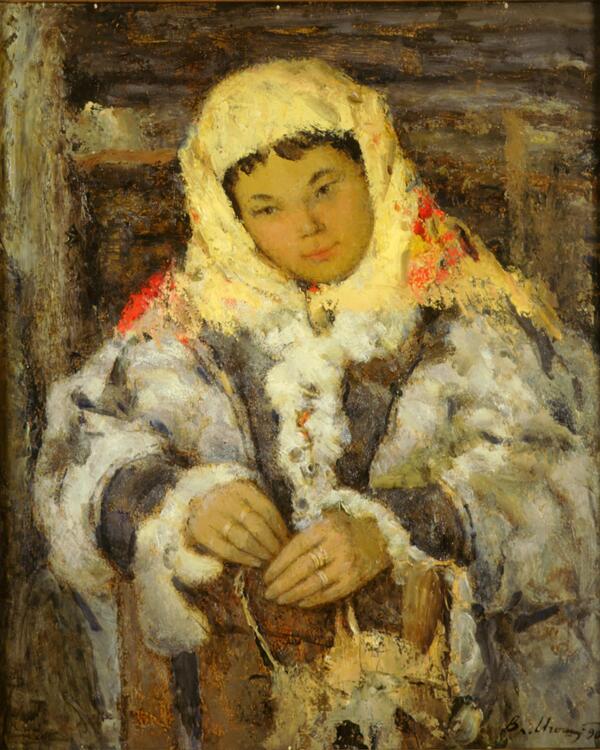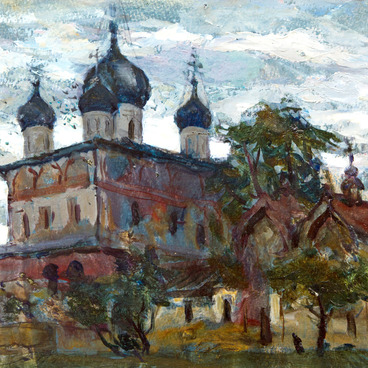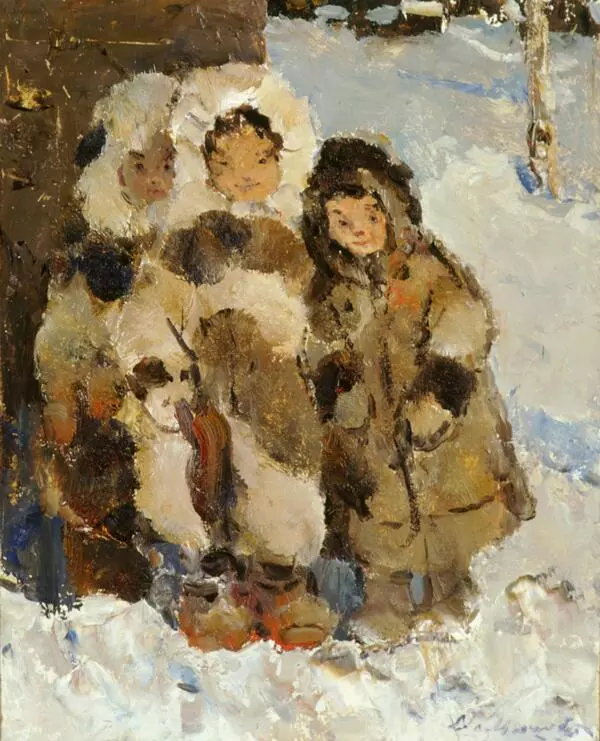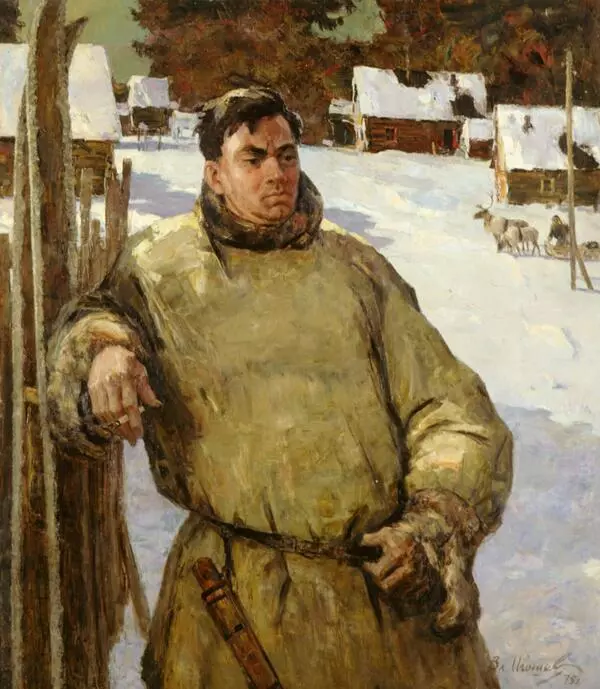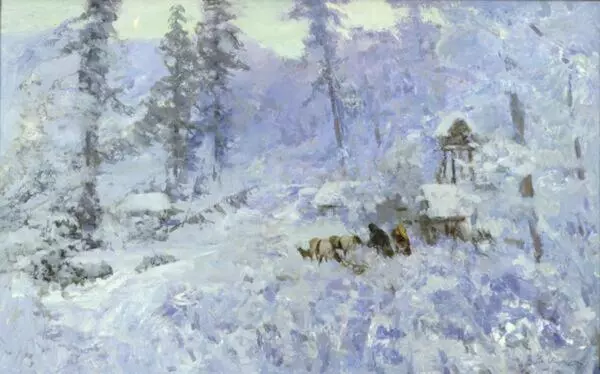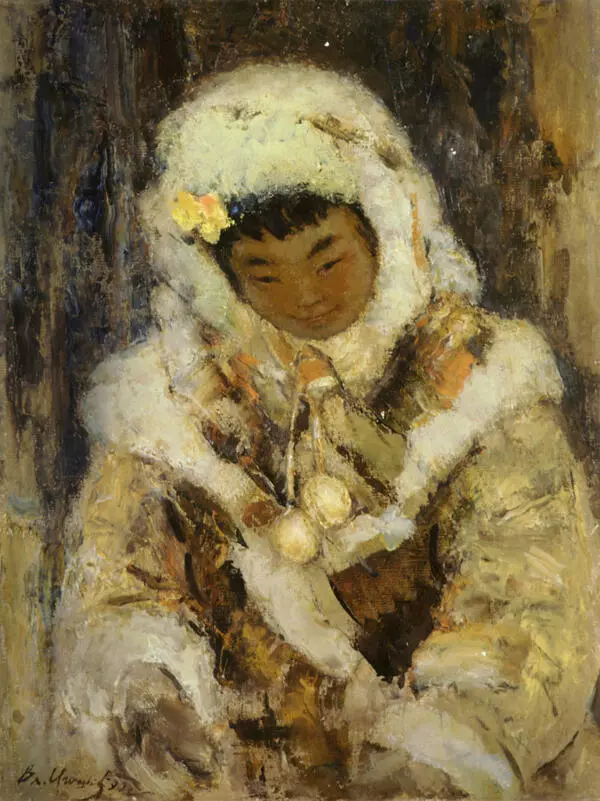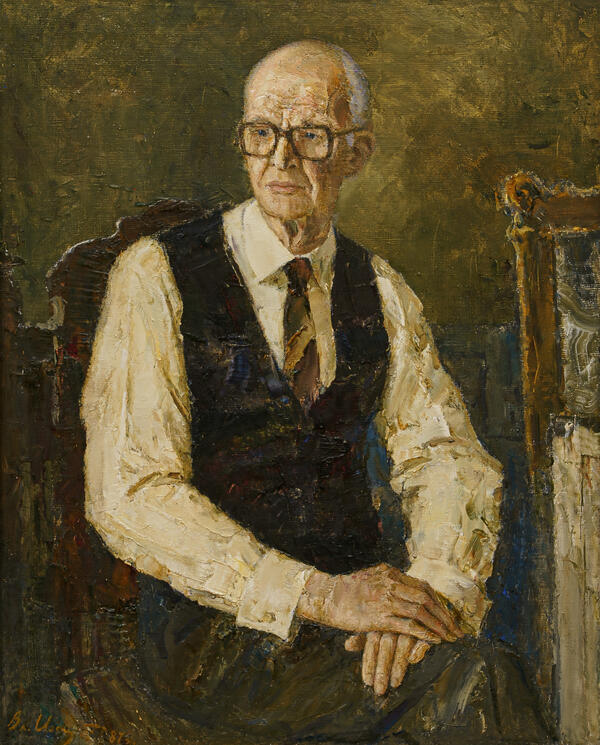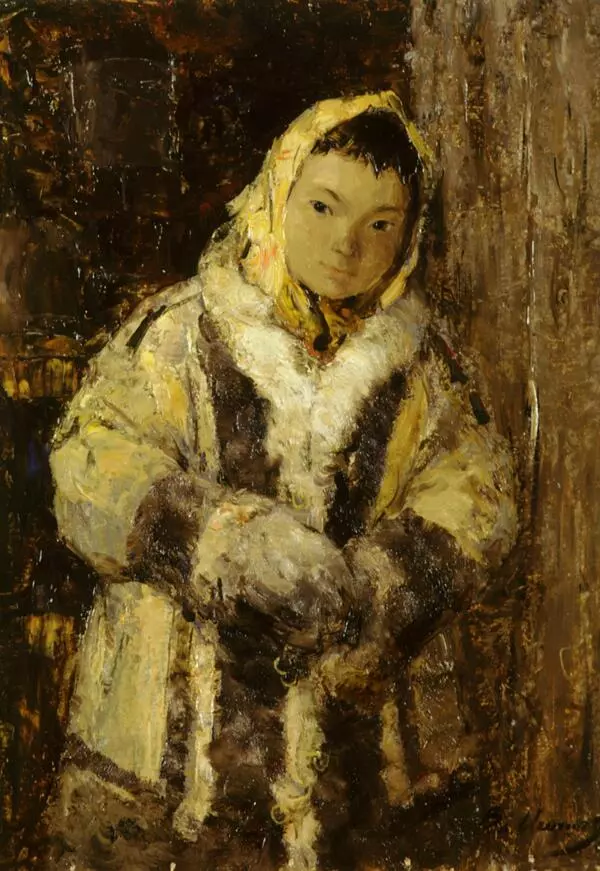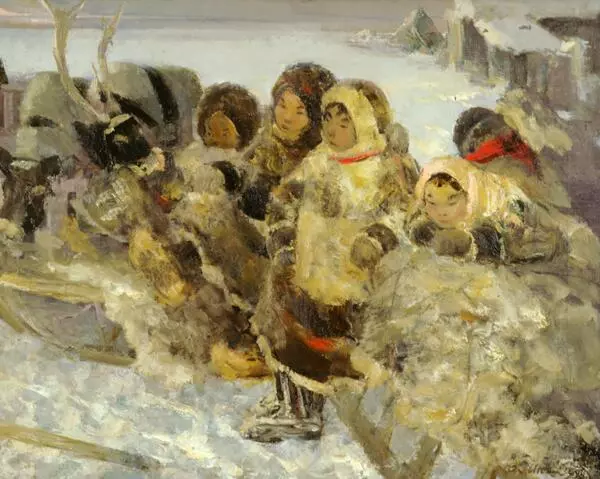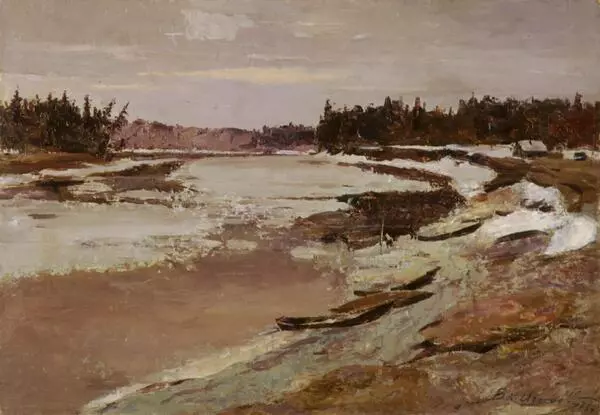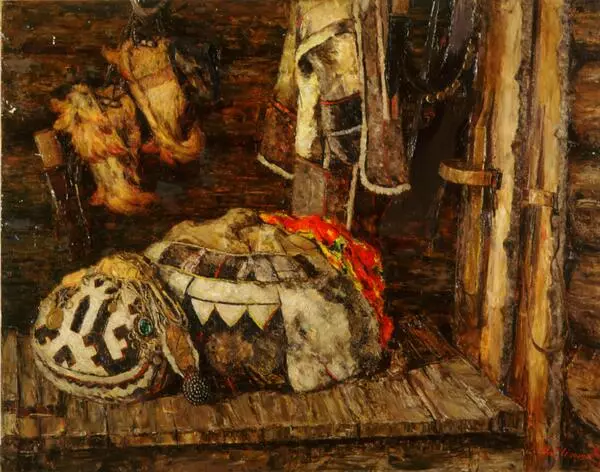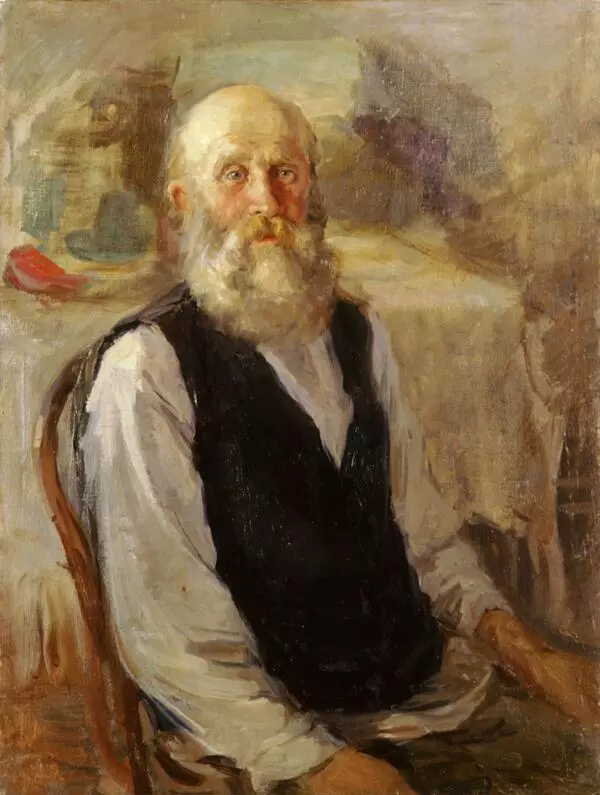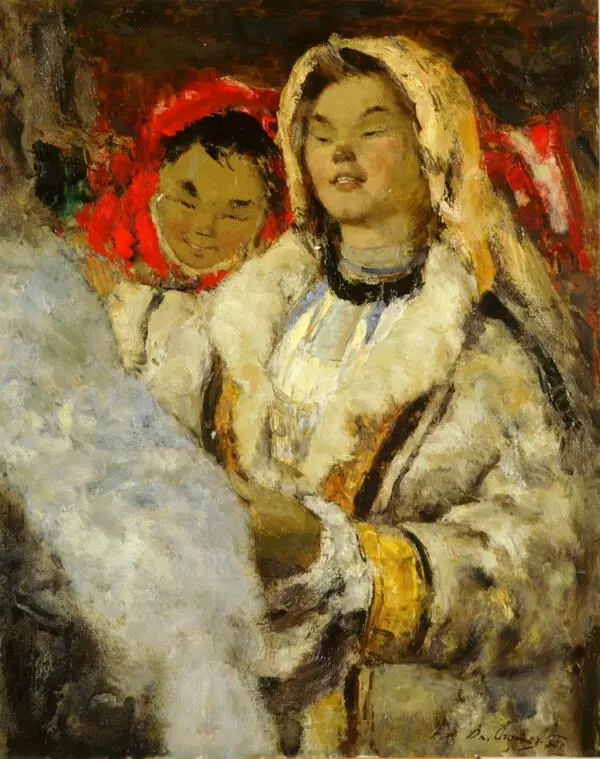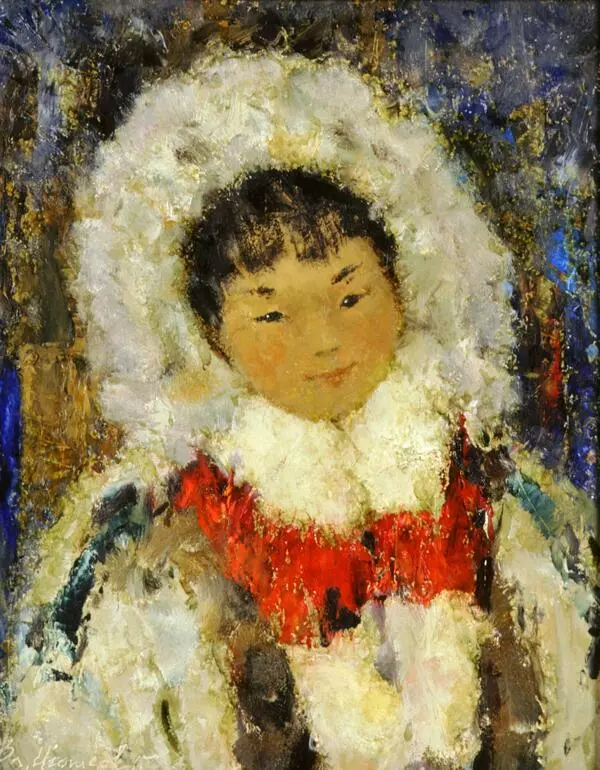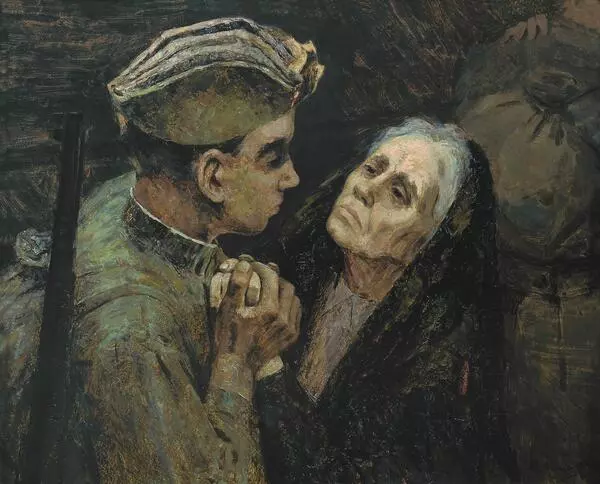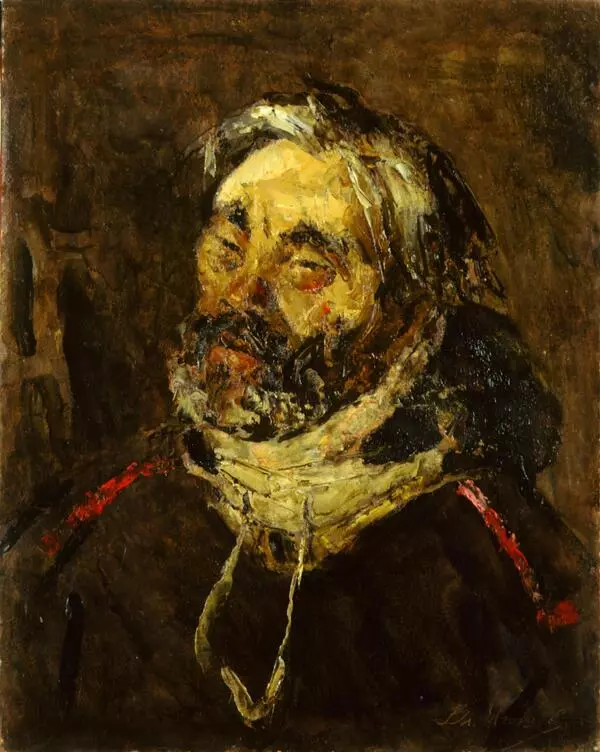Vladimir Igoshev was born in 1921 in Bashkiria. The future artist studied in Ufa at the Arts Faculty of the Ufa College of Arts, and in 1950 he graduated from The Surikov Art Institute in Moscow. At first he lived in Ufa, and in the late 1960s Igoshev moved to Moscow and soon became a professor at Moscow Architectural Institute and Moscow State Pedagogical University.
Vladimir Igoshev worked in various genres: he painted portraits and self-portraits, worked on landscapes and genre paintings. In 1982 the artist won the State Prize of Russia named after I. E. Repin for his series of paintings Taiga People.
Igoshev’s female portraits are usually emblematic, with generalized silhouettes and absent-minded faces. In the painting Lost in Daydreaming the composition is static, the colour palette is balanced with both cold and warm tones, and background is almost neutral. Altogether these features create an atmosphere of peace and the girl’s quiet reverie. Igoshev depicted his models in traditional costumes. The kerchief was an essential element of the Ob Ugric women’s costumes. The kerchief was folded in a way that its bottom part was bigger than the upper one. While working a woman tied the ends of the kerchief, wrapping it around her neck, so when needed it was easy to pull it on the face. The folk stories say that women used to cover their faces with the fringe attached to the kerchief. During the cold season women wore several kerchiefs at the same time.
The peoples of the North decorated their hands with the rings. Men and women wore simple copper or tin rings. There were also rings decorated with mother-of-pearl and glass. The people either bought their rings or made the simple jewelry themselves.
For Khanty and Mansi women long hair was the main sign of beauty. That’s why there are various taboos in the Ob-Ugric culture connected with hair. For example, the hairs that fell out were supposed to be burnt.
The Khanty and Mansi families live according to their age-old traditions. A man was the head of the family, a woman obeyed to her husband in many aspects. A blockhouse was supposed to be built by a man, and a chum was usually constructed by a woman. Men occupied themselves with fishery and hunting, women were engaged in cooking.
Vladimir Igoshev worked in various genres: he painted portraits and self-portraits, worked on landscapes and genre paintings. In 1982 the artist won the State Prize of Russia named after I. E. Repin for his series of paintings Taiga People.
Igoshev’s female portraits are usually emblematic, with generalized silhouettes and absent-minded faces. In the painting Lost in Daydreaming the composition is static, the colour palette is balanced with both cold and warm tones, and background is almost neutral. Altogether these features create an atmosphere of peace and the girl’s quiet reverie. Igoshev depicted his models in traditional costumes. The kerchief was an essential element of the Ob Ugric women’s costumes. The kerchief was folded in a way that its bottom part was bigger than the upper one. While working a woman tied the ends of the kerchief, wrapping it around her neck, so when needed it was easy to pull it on the face. The folk stories say that women used to cover their faces with the fringe attached to the kerchief. During the cold season women wore several kerchiefs at the same time.
The peoples of the North decorated their hands with the rings. Men and women wore simple copper or tin rings. There were also rings decorated with mother-of-pearl and glass. The people either bought their rings or made the simple jewelry themselves.
For Khanty and Mansi women long hair was the main sign of beauty. That’s why there are various taboos in the Ob-Ugric culture connected with hair. For example, the hairs that fell out were supposed to be burnt.
The Khanty and Mansi families live according to their age-old traditions. A man was the head of the family, a woman obeyed to her husband in many aspects. A blockhouse was supposed to be built by a man, and a chum was usually constructed by a woman. Men occupied themselves with fishery and hunting, women were engaged in cooking.

